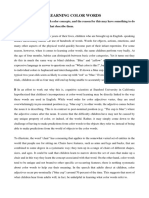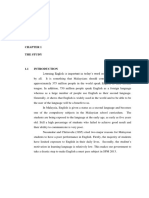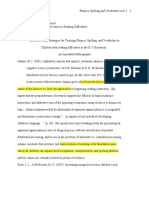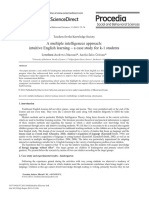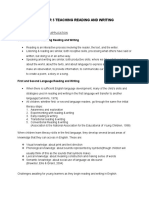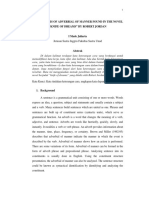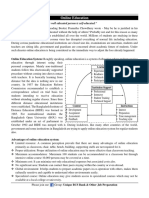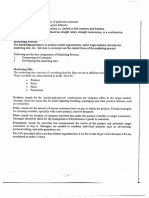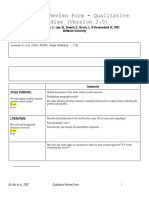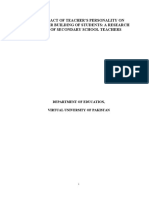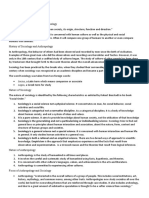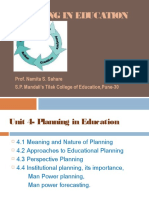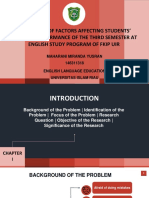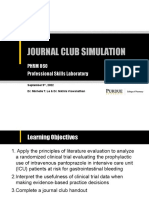Reading2_02 Ms Nga BAV.
2021
PROGRESS TEST 3
READING PASSAGE 1
You should spend about 20 minutes on Questions 1-13, which are based on the reading
passage below.
LEARNING COLOR WORDS
Young children struggle with color concepts, and the reason for this may have something to
do with how we use the words that describe them.
A In the course of the first few years of their lives, children who are brought up in
English- speaking homes successfully master the use of hundreds of words. Words for
objects, actions, emotions, and many other aspects of the physical world quickly become part
of their infant repertoire. For some reason, however, when it comes to learning color words,
the same children perform very badly. At the age of four months, babies can distinguish
between basic color categories. Yet it turns out they do this in much the same way as blind
children. "Blue" and "yellow" appear in older children's expressive language in answer to
questions such as "What color is this?", but their mapping of objects to individual colors is
haphazard and interchangeable. If shown a blue cup and asked about its color, typical two-
year-olds seem as likely to come up with "red" as "blue." Even after hundreds of training
trials, children as old as four may still end up being unable to accurately sort objects by color.
B In an effort to work out why this is, cognitive scientists at Stanford University in
California hypothesized that children's incompetence at color-word learning may be directly
linked to the way these words are used in English. While word order for color adjectives
varies, they are used overwhelmingly in pre-nominal position (e.g. "blue cup"); in other
words, the adjective comes before the noun it is describing. This is in contrast to post-
nominal position (e.g. "The cup is blue") where the adjective comes after the noun. It seems
that the difficulty children have may not be caused by any unique property of color, or
indeed, of the world. Rather, it may simply come down to the challenge of having to make
predictions from color words to the objects they refer to, instead of being able to make
predictions from the world of objects to the color words.
To illustrate, the word "chair" has a meaning that applies to the somewhat varied set
of entities in the world that people use for sitting on. Chairs have features, such as arms and
legs and backs, that are combined to some degree in a systematic way; they turn up in a range
of chairs of different shapes, sizes, and ages. It could be said that children learn to narrow
down the set of cues that make up a chair and in this way they learn the concept associated
with that word. On the other hand, color words tend to be unique and not bound to other
specific co-occurring features; there is nothing systematic about color words to help cue their
meaning. In the speech that adults direct at children, color adjectives occur pre-nominally
("blue cup") around 70 percent of the time. This suggests that most of what children hear
from adults will, in fact, be unhelpful in learning what color words refer to.
C To explore this idea further, the research team recruited 41 English children aged
between 23 and 29 months and carried out a three- phase experiment. It consisted of a pre-
�Reading2_02 Ms Nga BAV. 2021
test, followed by training in the use of color words, and finally a post-test that was identical
to the pre-test. The pre- and post-test materials comprised six objects that were novel to the
children. There were three examples of each object in each of three colors—red, yellow, and
blue. The objects were presented on trays, and in both tests, the children were asked to pick
out objects in response to requests in which the color word was either a prenominal ("Which
is the red one?") or a post-nominal ("Which one is red?").
In the training, the children were introduced to a "magic bucket" containing five sets
of items familiar to 26-month-olds (balls, cups, crayons, glasses, and toy bears) in each of the
three colors. The training was set up so that half the children were presented with the items
one by one and heard them labelled with color words used pre-nominally ("This is a red
crayon"), while the other half were introduced to the same items described with a post-
nominal color word ("This crayon is red"). After the training, the children repeated the
selection task on the unknown items in the post-test. To assess the quality of children's
understanding of the color words, and the effect of each type of training, correct choices on
items that were consistent across the pre- and post-tests were used to measure children's color
knowledge.
D Individual analysis of pre- and post-test data, which confirmed parental vocabulary
reports, showed the children had at least some knowledge of the three colour words: they
averaged two out of three correct choices in response to both pre- and post-nominal question
types, which, it has been pointed out, is better than chance. When children's responses to the
question types were assessed independently, performance was at its most consistent when
children were both trained and tested on post-nominal adjectives, and worst when trained on
pre-nominal adjectives and tested on post-nominal adjectives. Only children who had been
trained with post- nominal color-word presentation and then tested with post-nominal
question types were significantly more accurate than chance. Comparing the pre- and post-
test scores across each condition revealed a significant decline in performance when children
were both pre- and post-tested with questions that placed the color words pre-nominally.
As predicted, when children are exposed to color adjectives in post-nominal position,
they learn them rapidly (after just five training trials per color); when they are presented with
them pre-nominally, as English overwhelmingly tends to do, children show no signs of
learning.
Questions 1-4
The Reading Passage has four sections A-D.
Choose the correct heading for each section from the list of headings below.
List of Headings
i Some unsurprising data
ii A possible explanation
iii Why names of objects are unhelpful
iv Checking out the theory
v A curious state of affairs
vi The need to look at how words are formed
vii How age impacts on learning colours
�Reading2_02 Ms Nga BAV. 2021
1. Section A
2. Section B
3. Section C
4. Section D
Questions 5-9
Complete the summary below.
Choose NO MORE THAN TWO WORDS from the passage for each answer.
The Hypothesis
Children learn many words quite quickly, but their ability to learn colour words takes
longer than expected. In fact, despite 5 ......................... many four-year olds still struggle to
arrange objects into colour categories. Scientists have hypothesised that this is due to the 6
......................... of the adjectives in a phrase or sentence and the challenges this presents.
While objects consist of a number of 7 ......................... that can be used to recognise other
similar objects, the 8 ......................... of a colour cannot be developed using the same
approach. As a consequence, the way colour words tend to be used in English may be 9
....................... to children.
Questions 10-11
Choose TWO letters, A-E.
Which TWO of the following statements about the experiment are true?
A. The children were unfamiliar with the objects used in the pre- and post-test.
B. The children had to place the pre- and post-test objects onto coloured trays.
C. The training was conducted by dividing the children into two groups.
D. Pre-nominal questions were used less frequently than post-nominal questions in the
training.
E. The researchers were looking for inconsistencies in children's knowledge of word order
Questions 12-13
Choose TWO letters, A-E.
Which TWO of the following outcomes are reported in the passage?
A. Average results contradicted parental assessment of children’s knowledge.
B. Children who were post-tested using post-nominal adjectives performed well, regardless
of the type of training.
C. Greatest levels of improvement were achieved by children who were trained and post-
tested using post-nominal adjectives.
D. Some children performed less well in the post-test than in the pre-test.
E. Some children were unable to accurately name any of the colours in the pre and post-tests
�Reading2_02 Ms Nga BAV. 2021
READING PASSAGE 2
You should spend about 20 minutes on Questions 14-26, which are based on the reading
passage below.
The brain and Intelligence
Human intelligence is an elusive quality. We all think we know it when we see it but try to
pin down that quality to a firm, testable definition and suddenly, even for the most
experienced researchers, the concept disappears. But now a team of British and German
scientists believe they have firmly nailed down at least part of the notion of intelligence. They
claim to have found a location for intelligence, whatever it is, in the brain.
For many years researchers have believed that intelligence is a quality which is spread
throughout the whole human brain. Traditional psychologists such as Benjamin Martin
believe that this accounts for incidences where physical damage to the brain need not affect
intelligence at all. By using advanced scanning equipment, however, researchers led by John
Duncan of the Cognition and Brain Sciences Unit in Cambridge now think that it is much
more localised and at the front of the brain in particular.
Duncan and his team have attempted to link intelligence to the activity of nerve cells in the
brain by giving subjects a series of problem solving tests. These tests are of the standard sort
used to test and measure intelligence. They resemble puzzles where sequences of numbers or
letters have to be rearranged or continued, or patterns of shapes have to be inverted. While
subjects are carrying out these intelligence tasks, their heads are scanned to see where
electrical activity and blood flow in the brain are concentrated. It turns out that activity was
concentrated in the frontal cortex and so, Duncan and his team presume, intelligence is
situated there too.
This new idea has not been met with universal acceptance, however. The usual definition of
"intelligence" was set by Charles Spearman 100 years ago. This was the quality that allows
some people to be very good at a whole variety of things - music, mathematics, practical
problem solving and so on - while others are not. He called this quality general intelligence or
the "g" factor for short. It was a contentious idea even at the time but still noone has come up
with a better definition. Nonetheless, because the notion of intelligence is imprecisely
defined, the idea that there is a fixed location for intelligence has to be questioned. The
questioning comes in an article in the prestigious journal Science, the same edition as
Duncan's own article. Yale psychologist Robert Stemberg points out that many people, who
are clearly intelligent, such as leading politicians and lawyers, do very badly in intelligence
tests. Conversely, one might argue, there are plenty of academics who are good at
intelligence tests but who cannot even tie their own shoe laces! Sternberg implies that the
idea, that being a successful politician or lawyer does not require intelligence, flies in the face
of reason. Rather more likely is the idea that so-called intelligence tests can have little to do
with many practical manifestations of intelligence. The skills of verbal and mathematical
analysis measured by these tests can tell us very little about the skills of social interaction and
people handling which are equally essential for success and are, therefore, equally valid
qualities of intelligence.
�Reading2_02 Ms Nga BAV. 2021
Sternberg makes a further criticism of the conclusions drawn by Duncan's team. The mental-
atlas approach really does not tell us anything about intelligence. The fact that we know a
computer's "intelligence" is produced by a computer chip and that we can say where this chip
is, does not tell us anything about the computer's intelligence or ability. We could easily
move the location of the chip and this would not change the computer's "intelligence". As
Benjamin Martin points out, this may be what happens in reality when following physical
damage to one area of the brain, knowledge and ability appear able to relocate.
Questions 14-21
Classify the following statements as referring to
A. John Duncan
B. Charles Spearman
C. Benjamin Martin
D. Robert Steinberg
E. The writer of the article
Write the appropriate letters (A-E) in boxes 14-21 on your answer sheet.
Example Answer
Physical damage to the brain need not affect intelligence. C
14. Intelligence can be located throughout the brain.
15. Intelligence makes you good at many different things.
16. Intelligence tests examine limited skills.
17. Intelligence is located at the front of the brain.
18. It is difficult to describe what intelligence is.
19. Intelligence tests can be bad at measuring the intellect of professionals.
20. Intelligence and other abilities can reposition following injury to the brain.
21. Intelligence is a characteristic required by those doing well in legal and political
professions.
Questions 22-26
Using the information contained in the text, complete the following sentences using NO
MORE THAN FOUR WORDS for each answer
22. Spearman's suggested that intelligence was the ability to be good at__________.
23. Spearman's ideas about intelligence are __________.
24. Sternberg suggests that in addition to academic ability, intelligence includes _______.
25. Sternberg also believes that intelligence is not affected by __________.
26. Duncan and his team have attempted __________ to locate the intelligence.
____THE END_____
